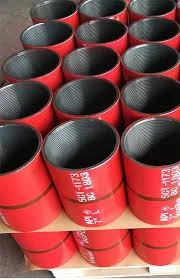- Afrikaans
- Albanian
- Amharic
- Arabic
- Armenian
- Azerbaijani
- Basque
- Belarusian
- Bengali
- Bosnian
- Bulgarian
- Catalan
- Cebuano
- Corsican
- Croatian
- Czech
- Danish
- Dutch
- English
- Esperanto
- Estonian
- Finnish
- French
- Frisian
- Galician
- Georgian
- German
- Greek
- Gujarati
- Haitian Creole
- hausa
- hawaiian
- Hebrew
- Hindi
- Miao
- Hungarian
- Icelandic
- igbo
- Indonesian
- irish
- Italian
- Japanese
- Javanese
- Kannada
- kazakh
- Khmer
- Rwandese
- Korean
- Kurdish
- Kyrgyz
- Lao
- Latin
- Latvian
- Lithuanian
- Luxembourgish
- Macedonian
- Malgashi
- Malay
- Malayalam
- Maltese
- Maori
- Marathi
- Mongolian
- Myanmar
- Nepali
- Norwegian
- Norwegian
- Occitan
- Pashto
- Persian
- Polish
- Portuguese
- Punjabi
- Romanian
- Russian
- Samoan
- Scottish Gaelic
- Serbian
- Sesotho
- Shona
- Sindhi
- Sinhala
- Slovak
- Slovenian
- Somali
- Spanish
- Sundanese
- Swahili
- Swedish
- Tagalog
- Tajik
- Tamil
- Tatar
- Telugu
- Thai
- Turkish
- Turkmen
- Ukrainian
- Urdu
- Uighur
- Uzbek
- Vietnamese
- Welsh
- Bantu
- Yiddish
- Yoruba
- Zulu
Exploring the Benefits and Applications of Metric Pipe Couplings in Modern Plumbing Systems
Understanding Metric Pipe Couplings Essential Components in Fluid Systems
In the realm of plumbing and fluid transport systems, the role of pipe couplings cannot be overstated. Among the various types available, metric pipe couplings are particularly significant due to their widespread usage in industries around the globe. These couplings serve as essential components for connecting segments of piping, ensuring a leak-proof and secure system for conveying liquids and gases.
What are Metric Pipe Couplings?
Metric pipe couplings are specialized fittings designed to connect two lengths of metric-sized piping. Unlike standard pipe fittings that are measured in imperial units, metric couplings adhere to specific dimensions defined in the metric system, measured in millimeters. This uniformity makes them essential in countries that utilize the metric system, facilitating ease of connection and compatibility between components.
Types of Metric Pipe Couplings
There are several types of metric pipe couplings, each serving a specific purpose within a piping system
1. Straight Couplings These are the most common type, allowing for a straightforward connection between two pipe ends of the same diameter. They are essential for extending pipe lengths.
2. Reducing Couplings Designed to connect pipes of different diameters, reducing couplings allow for transitions in the pipe size, a common necessity in various applications.
3. Elbow Couplings These couplings enable a change in direction in the piping system. Available in angles such as 45 or 90 degrees, elbow couplings are crucial in navigation around obstacles and ensuring efficient flow paths.
4. Flanged Couplings These are equipped with flanges that bolt together, providing a robust connection suitable for high-pressure applications. Flanged couplings are often utilized in industrial environments where the integrity of the connection is paramount.
metric pipe couplings

Materials Used in Metric Pipe Couplings
Metric pipe couplings can be manufactured from various materials, depending on the application requirements. Common materials include
- PVC (Polyvinyl Chloride) Lightweight and resistant to corrosion, PVC is a popular choice for non-pressurized systems, such as drainage and irrigation.
- CPVC (Chlorinated Polyvinyl Chloride) This variant can withstand higher temperatures and is used in hot water applications.
- Steel Both carbon and stainless steel couplings are prevalent in industrial applications due to their strength and durability. Stainless steel, in particular, offers excellent corrosion resistance, making it suitable for harsh environments.
- Brass Known for its superior resistance to corrosion, brass is often used in fittings that require high durability and aesthetic appeal.
Installation and Maintenance
The installation of metric pipe couplings should be performed with precision to ensure a leak-proof seal. Proper cleaning of pipe ends and the application of appropriate sealing compounds or threads can enhance the durability of the coupling. Regular inspections are vital, as wear and tear can lead to leaks and potential failures in the system.
Conclusion
In conclusion, metric pipe couplings are a cornerstone of fluid transport systems, ensuring seamless connections that contribute to the efficiency and reliability of various applications. With different types and materials available, they can be tailored to meet the specific needs of a project, whether in residential plumbing, industrial manufacturing, or agricultural irrigation. Understanding their significance and proper installation techniques is essential for anyone involved in the design or maintenance of piping systems. As industries continue to evolve, the importance of high-quality, reliable metric pipe couplings will remain a priority in maintaining the safety and effectiveness of fluid transport systems.
-
Tubing Pup Joints: Essential Components for Oil and Gas OperationsNewsJul.10,2025
-
Pup Joints: Essential Components for Reliable Drilling OperationsNewsJul.10,2025
-
Pipe Couplings: Connecting Your World EfficientlyNewsJul.10,2025
-
Mastering Oilfield Operations with Quality Tubing and CasingNewsJul.10,2025
-
High-Quality Casing Couplings for Every NeedNewsJul.10,2025
-
Boost Your Drilling Efficiency with Premium Crossover Tools & Seating NipplesNewsJul.10,2025







